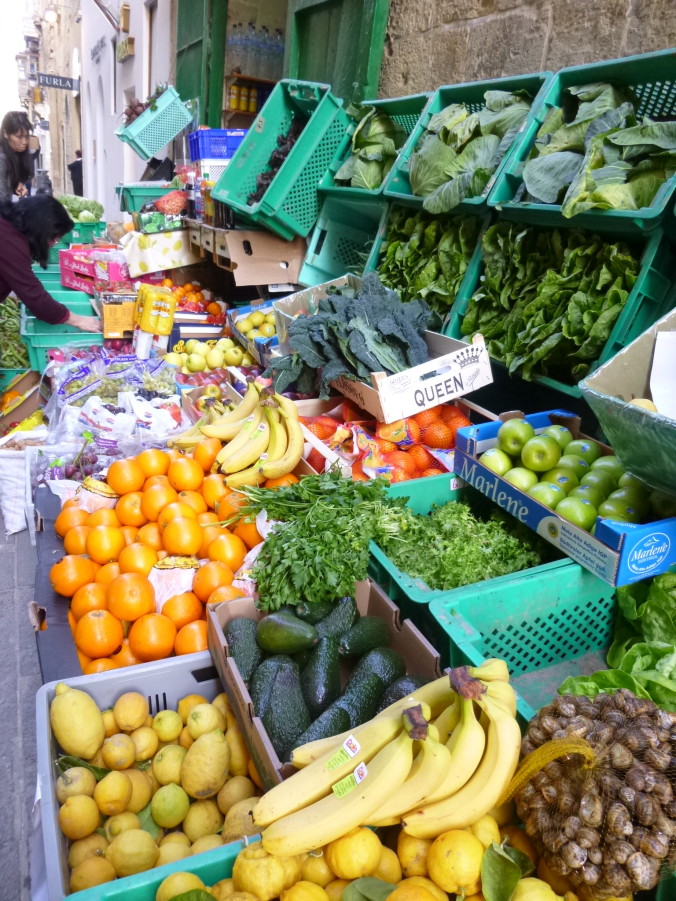Make yours a meatless meal today. You don’t have to be a full-blown vegetarian but if you are interested in contributing to a sustainable table eat less meat.
There are good reasons for opting for one meatless meal a week
- Lessens your carbon footprint (see Sustainability Victoria– adopt a vegetarian lifestyle) reduces greenhouse gas emissions to the tune of 1.5K C02 (annual emission of an average car), water usage of over 35,000 litres (30 times average individual household usage) and land usage of greater than 35 hectares
- Supports the moral values based on unnecessary killing sentient animals (chickens, cows, pigs and sheep)
- Supports our heart health: vegetarians have lower body weight, blood cholesterol levels and blood pressure
So if you’re like me and enjoy a balanced diet of meat and vegetables have a go at enjoying a meatless meal. Yes, I know that it takes more effort in thinking, sourcing , preparing and cooking tasty ‘meatless meals’ – the extra time soaking dried pulses (chickpeas, kidney beans etc) overnight and going to the special effort of buying and harvesting herbs and spices to jazz up the blandish ‘non-flavour’ of legumes. Not to mention the extra time taken to prepare and cook a vegetarian meal. Phew! Is it worth the extra time and effort?
Well that’s a question of the importance placed on the three dot points above. Now I’m not a food ‘nanny’ – and I’ll be the first to admit that I have lapses too – living with a family of males who announce that they still feel hungry if they don’t have meat as part of their evening meal. Hmmm..
So let’s make it easy and come up with some great recipe ideas…
Visit some of my own recipe ideas: Spinach and Cheese Triangles, Risottos, Rice paper rolls, Spicy lentil and pumpkin soup.
Visit Meat Free Mondays Australia for great recipe ideas that include seasonal vegetables
If you are concerned about ‘not getting enough quality protein’ then be assured that many dishes actually have the full complement of the ten essential amino acids. Amazing how many recipes combine vegetable proteins in the one dish to restore all essential amino acids. These are known as ‘complementary proteins’.
Mark Walqvist in his text Food and Nutrition in Australia Cassell Australia (1981) on p. 219 (yes, I know it’s old) describes it thus, ‘if two dietary proteins, which have different limiting amino acids, are eaten together, the deficiency of an amino acid in one may be made good by an abundance of that amino acid in another. Such proteins are said to be complementary and the nutritional quality of the mixture is higher than that of either of the food proteins alone.’ Walqvist gives an example viz; Corn (limiting in lysine) and beans (limiting in methionine) form such a mixture. Think tortillas made from cornmeal and refried red kidney beans (Mexican) or polenta made from cornmeal served with a bean salad (Italian).
In Rosemary Stanton’s Healthy Cooking Murdoch Books 2003 (p. 155), she outlines how many traditional food combinations such as rice and soya beans (vegetable Asian stir fry dishes), corn and beans (Mexican dishes), rice and dahl (Indian-style lentil dishes), wheat and chick peas (Mediterranean vermicelli dishes), or nuts and grains (the humble peanut butter sandwich) have a complete set of essential amino acids. Other combinations include:
| Combination | Example |
| Legumes + grain (wheat) | Baked beans on toast |
| Grain + leafy vegetables | Tabbouli (parsley + cracked wheat (burghul) |
| Legumes + corn | Tortilla with refried beans |
| Tofu and seeds | Tofu with sesame seeds (tahini paste) |
| Legume + grain (wheat) | Cous cous (chick peas + cracked wheat (burghul)
Felafel in pita bread Dhal with chapatis Lentil burger |
| Legume + seeds | Chick pea dip (hommus) mixed with sesame seeds (tahini paste)
Peanuts and sunflower seeds |
| Legumes + rice | Lentil curry (dahl) and rice |
| Grains and seeds | Seeded bread |
| Nuts and tofu | Tofu with stir fried cashews |
| Nuts+ seeds + grains | Muesli |
| Dairy products + grains | Pasta and cheese (Macaroni cheese), muesli + milk and milk + grain puddings (rice pudding, bread + butter puddings) |
Reference: Rosemary Stanton’s Healthy Cooking (Murdoch Books 2003) p. 182
Don’t you think it’s amazing that Mother Nature in her wisdom happened to be genius to make these leguminous and grain plants available in diverse countries as Italy, India, China and Mexico? And that the ancient peoples of these two diverse lands intuitively put these two food sources together how did they know that??
Look out for some fave recipes based on complementary protein sources to share with you in future posts
- Pilaf (wheat and rice) – an adaptation of my Cypriot friend Mira’s recipe
- Homemade baked beans on wholemeal toast (wheat and beans) from The Food Book
- Stuffed zucchini flowers served with noodles (rice and wheat)- an adaptation of my Cypriot friend Markos’s recipe.

Leave a Reply